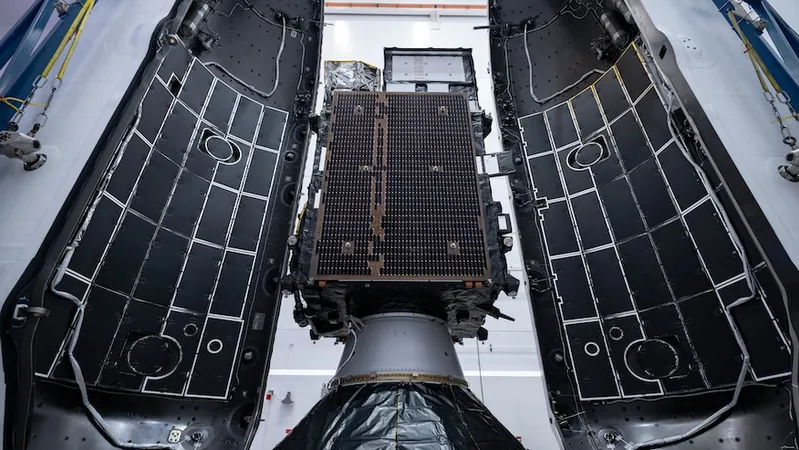
Countdown to Liftoff: SpaceX Falcon 9 Set to Launch Game-Changing Satellite for Europe
2025-07-01
Author: Chun
Get ready for a thrilling evening at NASA's Kennedy Space Center as a SpaceX Falcon 9 rocket gears up to launch a groundbreaking satellite, the Meteosat Third Generation Sounder (MTG-S1)! This innovative spacecraft is designed to revolutionize weather monitoring and air quality assessment across Europe and North Africa.
Scheduled for liftoff at 5:03 p.m. EDT on Tuesday, July 1, from Launch Complex 39A, the MTG-S1 will enter a geostationary orbit nearly 36,000 km above the Earth. But there's a catch—poor weather is threatening to delay this vital mission!
The 45th Weather Squadron has issued reports indicating only a 20% chance of favorable conditions on the primary launch day, with thunderstorms likely to disrupt optimal launch conditions. According to the National Hurricane Center, a storm system known as Disturbance 1 may be brewing, posing further challenges.
As the Falcon 9 prepares for its ninth flight using the B1085 booster, excitement is building. If all goes well, the booster will attempt its landing on the droneship 'Just Read the Instructions,' marking its 127th successful landing.
Once launched, the MTG-S1 will separate from the rocket around 35 minutes post-liftoff, with signal acquisition expected shortly after. The satellite will then embark on a 17-day journey to reach its operational orbit.
ESA project manager James Champion expressed eager anticipation, stating, "We can’t wait to get it up there and start operating it." Once it reaches its destination, a 9-12 month commissioning period will follow to calibrate the instruments.
Next Generation Technology to Transform Weather Data
The MTG-S1 is part of a cutting-edge series that will ultimately include six satellites, significantly enhancing meteorological data collection. This satellite is equipped with Europe’s first hyperspectral sounding instrument in geostationary orbit, allowing it to collect weather data every 15 minutes, providing unparalleled insights for meteorologists.
Additionally, the MTG-S1 will carry the Copernicus Sentinel-4 instrument, a sophisticated spectrometer tasked with monitoring air pollution and air quality. This groundbreaking tool will detect trace gases with incredible precision, vastly improving responses to environmental challenges.
Champion noted that the combination of data from the sounder and imagers will greatly increase meteorological accuracy, vital for responding to extreme weather events. "The amount of severe weather events that the sounder data will help address is going to be immense," he said.
Collaboration and Future Prospects
The collaboration with the European Commission on the Sentinel-4, which resides in the same satellite, is a significant first, paving the way for future joint efforts in low Earth orbit.
Given the many advances made by the MTG program, including technologies to refine atmospheric measurements and address potential operational challenges, the countdown to liftoff is not just about launching a satellite; it's about launching a new era in weather monitoring and environmental stewardship.
Stay tuned as we track the launch and witness history in the making!





 Brasil (PT)
Brasil (PT)
 Canada (EN)
Canada (EN)
 Chile (ES)
Chile (ES)
 Česko (CS)
Česko (CS)
 대한민국 (KO)
대한민국 (KO)
 España (ES)
España (ES)
 France (FR)
France (FR)
 Hong Kong (EN)
Hong Kong (EN)
 Italia (IT)
Italia (IT)
 日本 (JA)
日本 (JA)
 Magyarország (HU)
Magyarország (HU)
 Norge (NO)
Norge (NO)
 Polska (PL)
Polska (PL)
 Schweiz (DE)
Schweiz (DE)
 Singapore (EN)
Singapore (EN)
 Sverige (SV)
Sverige (SV)
 Suomi (FI)
Suomi (FI)
 Türkiye (TR)
Türkiye (TR)
 الإمارات العربية المتحدة (AR)
الإمارات العربية المتحدة (AR)